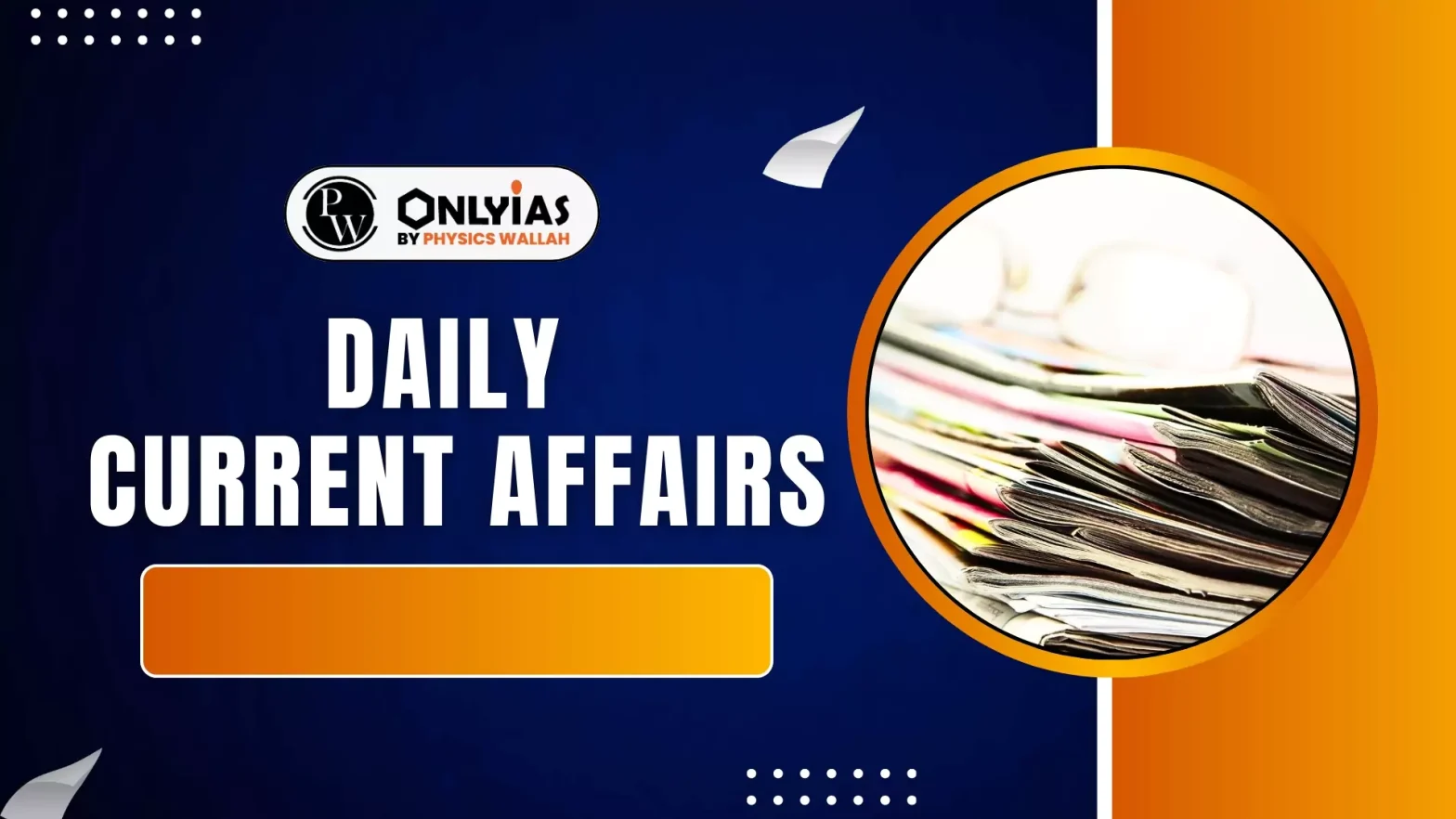The emergence of a multipolar West driven by America’s shifting global priorities and Europe’s quest for strategic autonomy has opened both opportunities and challenges for India’s foreign policy in a changing global order.
About the Multipolar West
- About West: In international relations, “the West” refers to a group of nations that share a common heritage of liberal democracy, market-based economies, and post–World War II alliance structures led by the United States.
- Multipolar West: The Multipolar West refers to the emergence of multiple centres of power, influence, and decision-making within the Western world itself which were once unified under American leadership during the Cold War and the unipolar era that followed.
- Implication: This pluralism within the West is reshaping global diplomacy and creating new spaces for countries like India to engage with multiple partners on flexible terms.
Historical Arc of the West
- Post-World War II Unity: The “Collective West” was defined by U.S. dominance through NATO, Bretton Woods institutions, and shared liberal values.
- Europe and Japan deferred to Washington’s leadership to counter the Soviet bloc.
- Post-1991 Unipolar Moment: The Soviet collapse created a U.S.-led unipolar world.
- The 1990s were celebrated as “The end of history,” marked by the expansion of Western liberal order (e.g., NATO, EU enlargement, G7 including Russia).
- Rise of Revisionism: By the 2000s, Russia’s resurgence and China’s rise challenged Western dominance.
- The 2008 financial crisis exposed systemic Western fragility.
- Present Realignment: Internal divisions and competing priorities (Economic, technological, and ideological) have created a multipolar West, with multiple power centres (U.S., EU, UK, Japan, Canada, Australia) cooperating but not uniformly aligned.
Causes of Fragmentation among West
- America First Nationalism: U.S. retreat from global commitments seen during Donald Trump’s presidency questioned traditional alliances and eroded transatlantic trust. Example: Trump’s criticism of NATO allies’ low defence spending and trade imbalances.
- US withdrawal from the Paris Climate Agreement symbolised unilateralism, undermining collective Western leadership on global challenges.Europe’s Quest for Strategic Autonomy: The EU’s increasing discomfort with U.S. unpredictability spurred defence, technology, and energy sovereignty initiatives.
Europe’s Strategic Autonomy
- The capacity of Europe to act independently (economically, technologically, and militarily) without overreliance on the U.S.
Key Initiatives
- EU’s Strategic Compass for security and defence (2022).
- Global Gateway: EU’s connectivity project to rival China’s BRI.
- Increased EU defence budgets post-Ukraine war. European Union countries lifted defense spe₹nding by 19% to a record €343 billion ($400 billion) in 2024
|
- Divergent Threat Perceptions:
- Eastern Europe views Russia as the main threat.
- Western Europe prioritises economic resilience and de-risking from China, as seen in the EU’s 2023 “De-risking Strategy.”
- Southern Europe like Italy, Greece, and Spain prioritise managing Mediterranean migration and debt stability over great-power rivalry.
EU’s 2023 “De-risking Strategy”
- Aim to reduce strategic dependencies on China by building resilience and diversifying supply chains, particularly in critical sectors like raw materials, semiconductors, and clean tech.
- Rather than full “decoupling,” the strategy focuses on managing vulnerabilities and ensuring economic security, supported by measures like the Foreign Direct Investment Screening Mechanism and the Critical Raw Materials Act.
|
- Economic and Technological Rivalries: Disputes over data sovereignty, industrial subsidies, and AI regulations deepen trans-Atlantic rifts.
- Data Sovereignty: EU’s General Data Protection Regulation and AI Act (2024) enforce strict privacy and accountability, clashing with the U.S lighter, innovation-driven framework reflected in repeated failures of EU–U.S. data-transfer pacts.
- Industrial Subsidies: U.S. Inflation Reduction Act (2022) gives massive subsidies to domestic industries, prompting EU countermeasures through its Green Deal Industrial Plan (2023)
- Economic Nationalism: Imposition of broad “reciprocal tariffs” in 2025 on imports from allies like Canada, Mexico, and the EU reflect protectionist unilateralism that deepened Western divisions.
- Political Polarisation: Domestic populism, culture wars, and the far-right’s rise in both U.S. and Europe have weakened shared liberal consensus.
Multipolar West and Global Implications
- Not Western Decline but Redistribution: The U.S. remains preeminent but no longer uncontested; Europe and Japan seek more agency, creating multiple Western centres of power.
- Fragmented Leadership: Lack of unified Western response on Russia–Ukraine, Middle East crises, or China’s rise highlights coordination fatigue.
- While the U.S. strongly backs Israel, France and several other European countries formally recognized Palestine in September 2025, signaling diverging Western stances
- New Coalitions and Fluidity: Coordination within the West has become flexible and issue-driven, with partners aligning on specific areas like trade, tech, and climate while differing on others.
- Alliances like AUKUS, QUAD, and EU–Indo-Pacific partnerships reflect selective cooperation.
- Technology and Trade Governance: Competing standards in AI, digital infrastructure, and supply chains are fragmenting the global economic order.
- Impact on Global Governance: Reform of the UN, WTO, and Bretton Woods institutions becomes harder as consensus erodes within the West itself.
What a Multipolar West Means for the Global South?
- Greater Strategic Space: Middle powers (India, Brazil, Indonesia, South Africa) can diversify partnerships and bargain for better terms.
- Issue-Based Alignments: Flexibility to work with multiple Western actors on trade, tech, and climate without full alignment.
- British Prime Minister Keir Starmer’s October 2025 visit to Mumbai with a 125-member business delegation, advancing cooperation on trade, technology, and climate under Vision 2035 — a clear example of India’s issue-based engagement with Western partners.
- Risk of Instability: A divided West could weaken collective responses to crises reducing deterrence against authoritarian powers.
- Competition for Influence: Western powers may increase outreach to the Global South (e.g., EU’s Global Gateway, G7’s PGII) to counter China’s Belt and Road Initiative.
India’s Diplomatic Opportunity
- Diversified Engagement: India can pursue multiple Western partnerships simultaneously like U.S. for technology, France for defence, EU for trade, UK for investment.
- Example: India–EFTA Trade & Economic Partnership Agreement (TEPA), signed in March 2024 and coming into force October 2025 and ongoing India–EU FTA talks in Brussels.
- European Union (EU) has unveiled a new “Strategic EU-India Agenda” aimed at elevating bilateral relations across trade, technology, defence, connectivity, and climate action
- Strategic Convergence with Europe: Shared Indo-Pacific vision and maritime security cooperation.
- Participation in EU’s Global Gateway and IMEC (India–Middle East–Europe Economic Corridor).
- Technology and Supply Chains: Collaboration on semiconductors, critical minerals, and digital public infrastructure (DPI).
- EU–India Trade and Technology Council (TTC) established in 2023 to align regulatory frameworks.
- Defence Cooperation: Expanding co-production with France, UK, and Italy in aerospace and naval systems.
- Example: Indo-French partnership in jet engine and UAV development.
- Middle-Power Coordination: India’s stance as a “balancing power” allows cooperation with both Western and non-Western actors, reinforcing its multi-alignment doctrine.
- Example: During its G20 Presidency (2023), India championed the concerns of developing nations and successfully secured the African Union’s admission as a permanent G20 member
Risks and Challenges
- Fragmented Western Response: A divided West may fail to act collectively on global security, allowing China to exploit divisions.
- Trade Protectionism: EU’s Carbon Border Adjustment Mechanism (CBAM) and U.S. protectionist policies could hurt Indian exports.
- Regulatory Divergences: Different Western digital and AI standards may complicate India’s integration into high-tech supply chains.
- Diplomatic Balancing: Managing contradictions between U.S. and European expectations especially on Russia and China requires deft diplomacy and may strain India’s diplomatic bandwidth.
- Domestic Constraints: Slow bureaucratic reform, limited institutional capacity, and lagging economic competitiveness could prevent India from fully exploiting these openings.
Domestic Preparedness as Way Forward
- Strengthen Institutional Agility: Create a Whole-of-Government foreign policy coordination mechanism integrating MEA, Commerce, and Technology ministries for faster decisions.
- Empower think tanks and Indian missions in Europe for strategic dialogues and technology diplomacy.
- Accelerate Economic Modernisation: Fast-track India–EU FTA to expand market access.
-
- Enhance manufacturing competitiveness under Atmanirbhar Bharat and PLI schemes to plug into Western supply chains.
- Build Technology and Standards Readiness: Develop indigenous standards in AI, data protection, and green trade to align with Western frameworks (GDPR, AI Act).
- Promote India’s Digital Public Infrastructure (DPI) model globally which is a credible alternative to Chinese and Western platforms.
- Deepen Defence and Maritime Cooperation: Expand co-development of advanced defence technologies with France, Germany, and UK.
- Strengthen Indo-Pacific maritime partnerships for freedom of navigation and crisis response.
- Lead from the Global South: Use platforms like G20, BRICS, and ISA to advocate inclusive multilateralism and equitable climate finance.
- Champion “Reformed Multilateralism”: Push for UNSC expansion and democratization of global governance.
- Promote Ethical Tech Diplomacy: Lead global dialogues on responsible AI, data sharing, and digital commons.
Conclusion
The multipolar West signals not the decline of the West but its internal pluralism. For India, this is a moment of strategic opportunity to engage multiple Western partners on its own terms, while reinforcing domestic capabilities to shape a just, inclusive, and multipolar world order.
![]() 9 Oct 2025
9 Oct 2025


